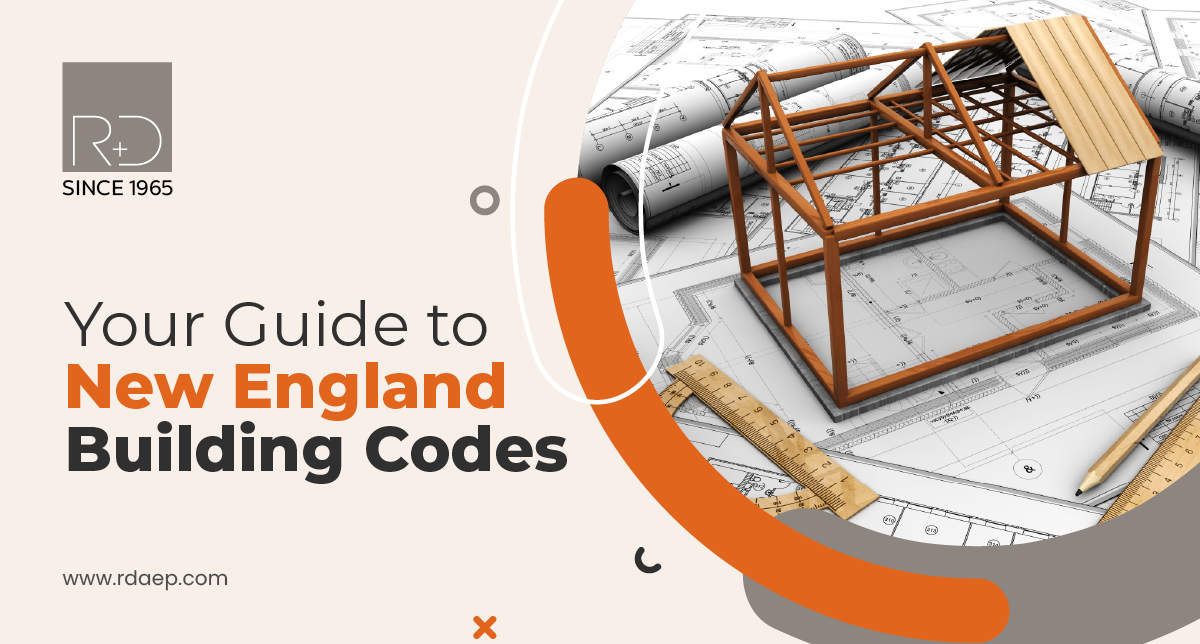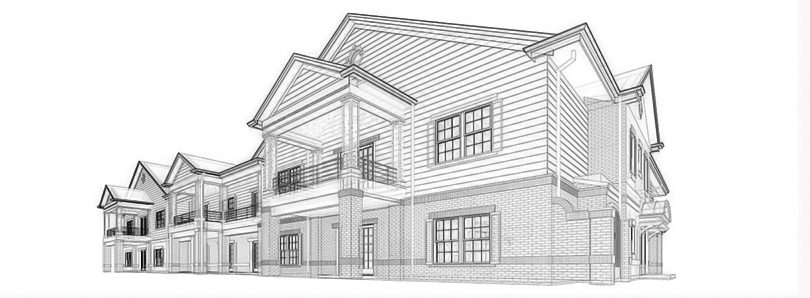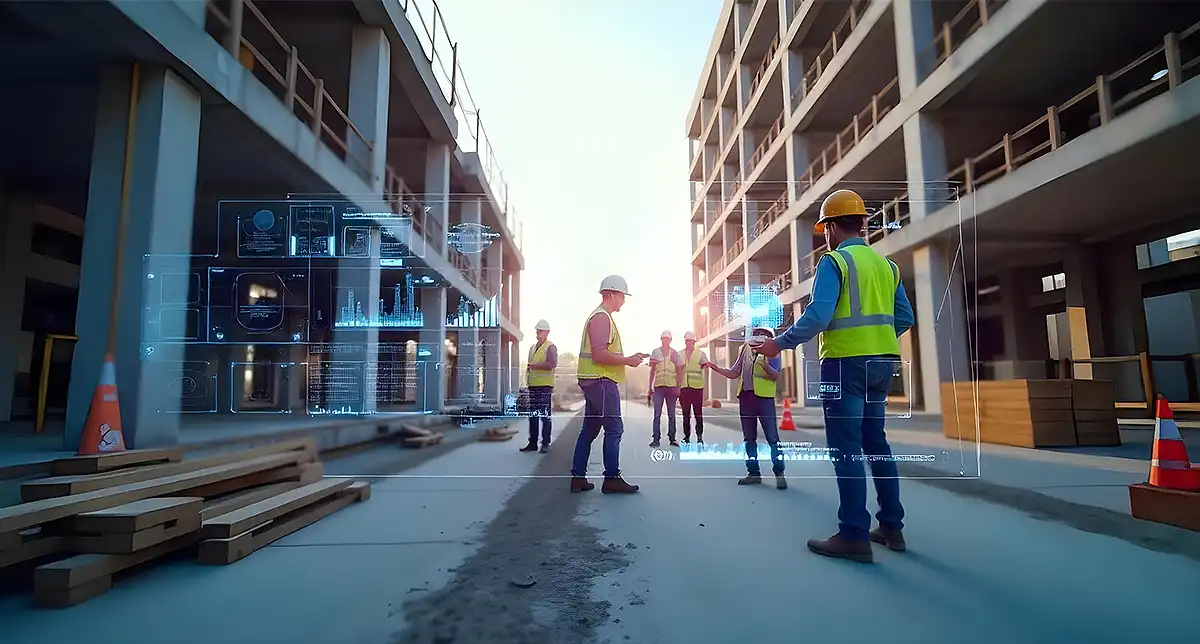Building codes are critical to ensuring public health, safety, and welfare in the built environment. In New England a region characterized by varying climates, coastal conditions, and historic architecture understanding and complying with these codes is especially vital. This guide provides developers and property owners with an overview of New England’s building codes, state-specific challenges, and best practices for navigating permits, inspections, and long-term compliance.
What Are Building Codes?
Definition and Role of building codes in Construction
A building code is a set of regulations detailing minimum standards for building design, construction, and maintenance. These codes are enforced by governmental authorities or professional organizations to safeguard public health and safety, ensure structural integrity, and promote efficient resource use. Key documents, like the building code book, provide a detailed outline of these standards.
Key Purposes of Building Codes
- Safety: Set minimum thresholds for structural integrity, fire prevention, and electrical systems, including the residential electrical panel code.
- Structural Standards: Provide guidelines on materials, construction practices, and occupancy limits.
- Risk Mitigation: Address potential hazards from earthquakes, fires, floods, and severe weather
Scope of Building Codes
Building codes typically regulate:
• Structural design and support
• Fire protection and safety
• Electrical and plumbing systems, following plumbers code
• Ventilation and mechanical systems
• Energy efficiency
• Accessibility requirements
• Material standards
Implementation of Code Enforcement
• Permits & Inspections: Most jurisdictions require a building permit before construction begins, as well as periodic inspections during and after the build. These building permit records are essential for ensuring compliance with local regulations, such as the CT state code.
• Legal Binding: Codes become legally enforceable once enacted by the appropriate authority. They apply to new construction, renovations, and sometimes require older structures to be retrofitted to meet the building code IBC standards.
• Why They Matter for Developers & Property Owners: Building codes protect against structural failures, fires, and other hazards; help avoid legal and financial liabilities; ensure cost savings through energy efficiency; and improve overall project longevity and marketability.
State-by-State Overview of Unique Challenges & Regulations
Though bound by common federal guidelines and international model codes, each New England state adapts or supplements these standards to address local conditions.
Massachusetts State Building Code
Regulatory Framework
• Governed by the Massachusetts State Building Code (MSBC).
• Enforces minimum standards for structural strength, sanitation, energy conservation, and fire protection.
• Flood provisions are numerous and can be conflicting, reflecting growing climate change concerns.
Climate Adaptation Challenges
• Flood risks are increasing due to sea-level rise and extreme weather events.
• Developers and property owners must consider long-term resilience and future conditions in their designs.
Local Adaptation Possibilities
• While the MSBC preempts most municipal ordinances, cities and towns can petition the Board of Building Regulations and Standards (BBRS) for permission to adopt more stringent local provisions if there are “special conditions” in their jurisdiction.
Recent Climate Policy Developments
• Massachusetts’s Climate Act of 2021 mandates a specialized stretch energy code with a net-zero definition.
• The tenth edition of the MSBC includes stricter flood provisions, signaling a growing emphasis on resiliency.
Connecticut
Connecticut State Building Code (CSBC)
• Based on the International Codes (I-Codes) developed by the International Code Council (ICC).
• Ensures safety, accessibility, and structural integrity for residential, commercial, and industrial construction, adhering to the CT state code..
• Includes energy-efficiency measures aligned with sustainable building practices.
Local Regulations and Challenges
• Some municipalities adopt additional, stricter rules—especially in flood zones, historic districts, and areas with unique zoning laws.
• Navigating the permit process can be complex; delayed approvals and local amendments often pose significant challenges.
Enforcement and Compliance
• Local building departments manage plan reviews, inspections, and occupancy certifications.
• Builders must remain informed about both state regulations and municipal amendments to the CSBC.
Rhode Island
Regulatory Framework
• Adopts national model codes rather than creating standalone regulations, promoting consistency with other states.
• Updates on a three-year cycle to keep pace with technological and scientific advancements in construction.
Off-Site Construction Innovation
• Rhode Island pioneered specialized standards for off-site construction, adopting the ICC/MBI 1210 standard for mechanical, electrical, and plumbing (MEP) systems.
• Focuses on energy and water efficiency in modular or factory-built construction components.
Code Review Process
• The Rhode Island Building Code Standards Committee rigorously evaluates updates, focusing on life safety, local industry impact, and economic considerations.
Upcoming Code Changes
• Plans to adopt the 2024 International Energy Conservation Code (IECC). A concurrency period will allow projects to choose between old and new codes for a limited time.
Vermont
Energy Code Requirements
• Residential Building Energy Standard (RBES) for homes up to three stories.
• Commercial Building Energy Standards (CBES) for multifamily properties over three stories and commercial buildings.
• Builders self-certify RBES compliance, with significant legal consequences if standards are not met.
Historic Building Considerations
• Vermont’s robust historic preservation laws recognize the value of older structures.
• Specialized codes (e.g., NFPA 909 and 914) allow alternative compliance paths to balance safety with preservation.
Enforcement and Support
• Efficiency Vermont provides free technical guidance to support compliance.
• Towns can adopt a higher “Stretch Code” for more stringent energy requirements.
New Hampshire
Outdated Code Landscape
• Historically one of the most out-of-date states in the Northeast, formerly using 2009 standards.
• Known for minimal local enforcement in certain municipalities, with the State Fire Marshal’s Office stepping in when needed.
2024 Code Update
• Beginning July 1, 2024, New Hampshire adopts the 2021 International Residential Code (IRC) and International Building Code (IBC).
• A 6-month concurrency period allows builders to use either the 2018 or 2021 editions; by January 1, 2025, only the 2021 codes will be acceptable.
Specific Code Considerations
• Energy Efficiency: Debates center around balancing costs, affordability, and environmental benefits.
• Snow Load Requirements: ASCE 7-16 for snow loads demands site-specific case studies for many communities.
Maine
Overview of Maine’s Building Code System
• The Maine Uniform Building and Energy Code (MUBEC) applies statewide.
• Enforced by larger municipalities (over 4,000 residents) and optional for smaller towns.
Unique Characteristics
• Adjustments accommodate local conditions, such as permitting “unstamped” locally milled lumber.
• Does not require residential sprinklers, reflecting regional preferences and builder feedback.
Addressing Energy Inefficiency
• Older building stock and cold winters drive the need for robust insulation and energy standards.
• The code aims to reduce CO2 emissions and supports Maine’s broader Climate Action Plan.
Understanding Building Codes & Regulations
Key Regulatory Frameworks
International Building Code (IBC) & International Residential Code (IRC)
• IBC: Comprehensive code setting minimum requirements for commercial, multi-family, and other large structures. Includes provisions for structural design, fire safety, and public health.
• IRC: Focuses on one- and two-family dwellings and townhouses up to three stories, addressing structural integrity, plumbing, mechanical systems, energy conservation, and electrical provisions, including the residential electrical panel code..
Role of Local Municipalities in Code Enforcement
• Code Enforcement Officers: Investigate potential violations, conduct inspections, and ensure compliance.
• Legal and Administrative Tools: Municipalities can levy fines, place liens, and require corrective actions to enforce building standards.
• Collaborative Approach: Effective enforcement often involves public works, health, fire, and planning departments working in concert.
Essential Building Code Categories in New England
Structural & Safety Standards
• Snow Load & Wind Resistance: Codes require detailed calculations, especially in coastal and mountainous areas.
• Seismic and Foundation Requirements: While not a high-seismic region, New England still enforces soil stability assessments and reinforced foundation standards.
Fire Safety & Egress Codes
• Fire-Resistant Materials and Sprinklers: Multi-story or high-occupancy buildings typically require sprinkler systems and specific fire-rated assemblies.
• Accessibility and Emergency Egress: Must meet ADA guidelines and provide safe, well-lit exits.
Mechanical, Electrical & Plumbing (MEP) Codes
• HVAC and Energy Standards: States often follow ASHRAE and IECC guidelines for efficient heating, cooling, and ventilation.
• Electrical and Plumbing Regulations: Must comply with the National Electrical Code (NEC) and state-level amendments, such as the plumbers code.
Energy Efficiency & Sustainability
• IECC Adoption: New England states frequently adopt advanced IECC editions.
• Green Building Incentives: Some offer tax incentives, LEED certification benefits, or specialized “stretch codes.”
Navigating Permits & Inspections
Securing Building Permits
• Application Requirements: Common documents include application forms, detailed construction plans, certified plot plans, contractor license details, and cost certifications.
• Approval Timelines: Vary by state; for example, Massachusetts requires a 30-day review period. Delays often occur due to incomplete paperwork or zoning conflicts.
Inspection & Compliance Checkpoints
• Construction Stages: Inspections typically occur at foundation, framing, and mechanical, electrical, plumbing, and final occupancy phases. Ensuring compliance with building inspection training ensures that projects meet the highest standards.
• Failed Inspections: Require corrective action followed by re-inspection. Each jurisdiction has specific remediation protocols.
Final Approval
• Certificate of Occupancy (CO): Issued after successful final inspections.
• Recommendations: Maintain thorough documentation, proactively communicate with local officials, and plan for potential review cycles.
Conclusion
Why Compliance Matters for Developers & Owners
- Safety & Risk Mitigation: Prevent structural failures, electrical mishaps, and fire outbreaks.
- Legal & Financial Protection: Avoid heavy fines, legal disputes, and potential project shutdowns, ensuring code compliance throughout the process.
- Property Value & Marketability: Code-compliant properties offer higher resale values and long-term sustainability.
Code Compliance Strategies
• Stay Informed: Regularly review code updates and local amendments.
• Obtain Permits Early: Address potential issues before construction starts.
• Engage Qualified Professionals: Architects, engineers, and contractors well-versed in New England codes help streamline the process.
• Maintain Active Oversight: Owners should remain involved to ensure code compliance from planning through final inspection.
By prioritizing building code compliance, developers and property owners invest in safer, more durable, and more cost-effective projects that meet modern standards and withstand the test of time in New England’s demanding environment.













